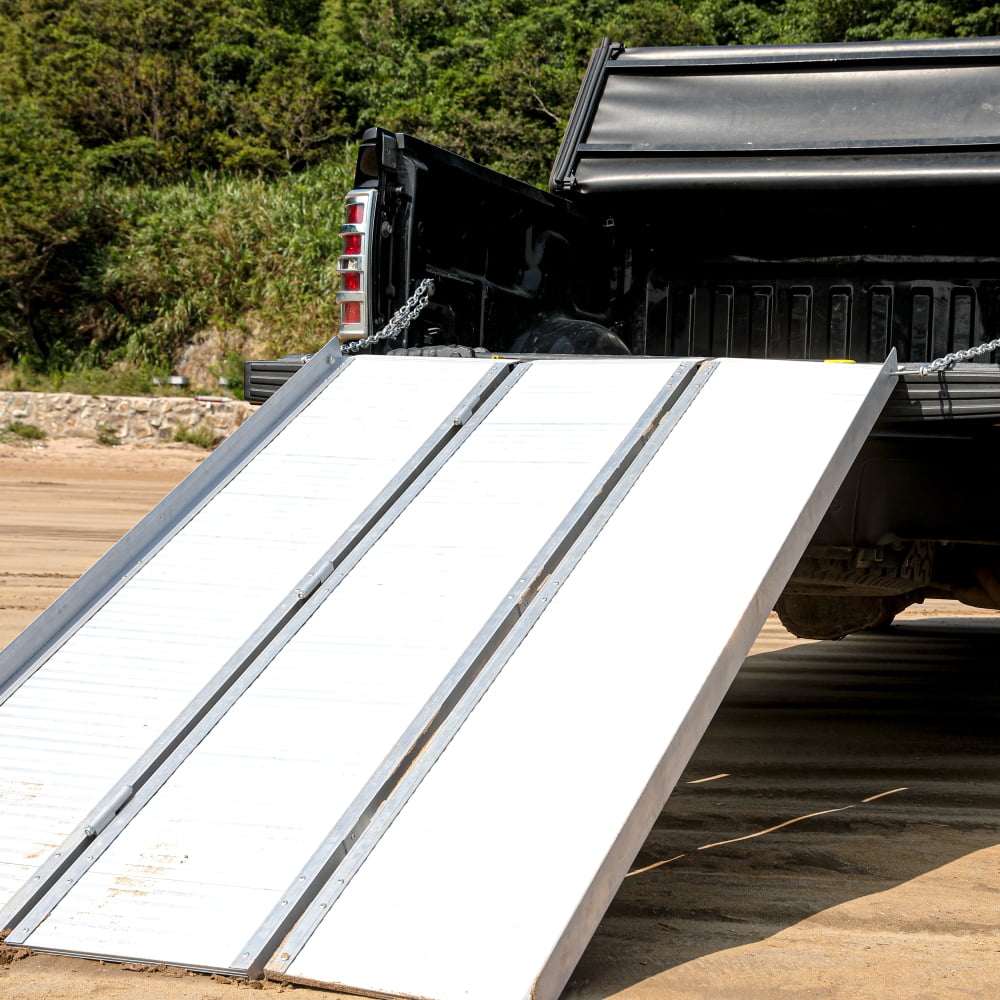

Consider putting the trailer on a surface that's lower than the one that the cargo is being loaded from so that the ramp will be fairly level. The steeper the ramp, the greater the likelihood of an accident. To make sure this doesn't happen, be sure that the ramp is tightly secured to the trailer, with a chain or safety straps.
#Loading ramps driver#
The vehicle and its driver will go tumbling. The rotating motion of the wheel can push the loading ramp backwards, away from the trailer and onto the ground. Imagine this scenario: You're driving up the ramp, the front wheel comes down on the trailer bed, and the rear wheel, now slightly elevated, starts to spin. The solution: Use a ramp that has a surface designed for traction (many do), and don't drive up a wet ramp.ĭon't let the ramp come loose from the trailer. Another danger is slip-sliding off the ramp. The simplest solution, if the vehicle has rear-wheel drive, is to drive it up the ramp backwards, in reverse, so that the powered wheel is uphill.ĭon't fall off the side of the ramp. If it does, the entire vehicle can spin around the powered rear wheels and this can cause it to overturn. But another important factor is whether the vehicle has rear-wheel drive. The risk is greater for vehicles with a high center of gravity (a motorcycle, for instance) than it is for vehicles with a low center of gravity like tractors. When driving up an inclined surface, such as a ramp, there's always a danger of tipping over backwards. On the next page, we'll not only look at some of the things you can do with a loading ramp but at safe techniques for their use.ĭon't fall over backwards. And when driving a vehicle up a loading ramp the vehicle can easily tip over, not only damaging the vehicle but injuring or even killing the driver. For instance, loading ramps can shift when heavy objects are placed on them and the spinning tires of a moving vehicle can even knock the loading ramp to the ground if it isn't secured properly. If used right, they let you move objects safely into a trailer, but they also raise a few safety issues of their own. Safety is a very important issue with loading ramps. Many loading ramps are designed to fold when not in use, so that you can stow them efficiently in the back of a truck or tuck them out of the way in a garage. Loading ramps are readily available from towing supply stores, either assembled or as kits, and they usually come with everything you'll need to load your trailer safely, including chains or nylon safety straps to secure the ramp to safety hooks in the trailer. Loading ramps are indispensable if you have something that needs to go into a trailer and it's too big to lift - a large box, say, or an all-terrain vehicle. A loading ramp helps you move heavy objects from the ground into the bed of a trailer (or up a short flight of stairs or into the back of a truck or…well, use your imagination). Like that old friend, it makes lifting things easier. The loading ramp is a real-world version of that old friend from high school science class, the inclined plane.


 0 kommentar(er)
0 kommentar(er)
